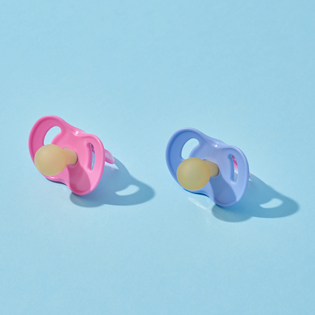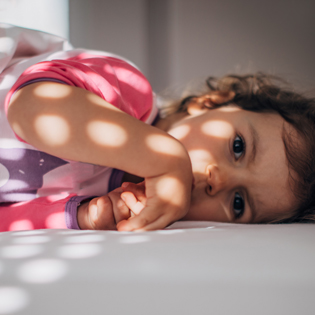After your baby is born, it may seem as though all the symptoms you've been contending with over the last nine months or so will evaporate instantly. But you'll continue to experience a variety of them during the postpartum recovery period, one of which is vaginal bleeding.
Rest assured that postpartum bleeding is normal and temporary. Here's what you can expect, including how long postpartum bleeding typically lasts and how to safely manage it.
What is postpartum bleeding or lochia?
Vaginal postpartum bleeding, or lochia, is the discharge of blood and mucus that starts after delivery. Postpartum bleeding is normal and natural: Your body is ridding itself of all the extra blood, mucus and tissue it needed during pregnancy.[1] As a result, you'll experience postpartum bleeding whether you gave birth vaginally or had a C-section.
Lochia is typically heavier and (often much) longer-lasting than your menstrual cycle. It also has some components that you won't find in a basic menstrual period, like mucus and tissue from your uterus, mostly from where the placenta was attached.
The heaviest of the bleeding will last for about three to 10 days after labor and delivery, and then it should taper off to lighter bleeding or spotting.
How long do you bleed after giving birth?
Lochia is typically heavier and dark red in color for up to 10 days after giving birth, and then transitions into lighter bleeding or spotting that can last for four to six weeks after delivery.
You'll see the difference in the color as this starts to happen, from red to pink, then brown, and finally to a yellowish white.
However, every person is different, and postpartum bleeding may end sooner or later.
Read This Next
Be aware that a few things can normally and temporarily increase or even cause a surge in blood flow, including when you first get out of bed in the morning, exercising, and straining when using the bathroom.
What are the stages of lochia?
There are three stages of lochia to be aware of, each of which looks a bit different from the others. They include:
Lochia rubra
This is the first stage of lochia. It lasts for three to four days and is characterized by a heavy flow of bright to dark red blood, sometimes with small clots. You may have mild cramping (like you would during your period) in this stage.
Lochia serosa
This is the second stage of lochia. It lasts four to 12 days and is accompanied by a moderate flow of pinkish brown blood or discharge that tends to be watery. You won’t have much or any clotting during this stage.
Lochia alba
This is the last stage of lochia. It can last between 12 days and six weeks. During this stage, you’ll see a light flow or spotting of yellowish white discharge with no blood or clots.
Postpartum bleeding, or lochia, is the normal discharge of blood, mucus, and tissue that starts after delivery. There are three stages of lochia that vary in duration and appearance: lochia rubra, lochia serosa, and lochia alba. Postpartum bleeding typically lasts for six or more weeks after delivery, though it becomes less heavy and changes color over time. Use super absorbent pads while you're bleeding after birth and wear clothes you don't mind getting stained. Watch for signs of a more serious condition like an infection or postpartum hemorrhage and contact your doctor right away if you notice any.
How to safely manage postpartum bleeding
For the first six weeks, use only super absorbent pads, even if you need the ones that are as thick as your baby's diapers. Make sure to change the pads often to prevent infection, and stay away from tampons, which can introduce bacteria into your still-recovering uterus and genital tract.
Your doctor can give you the green light on when it will be safe to go back to using tampons.
Choose clothes — particularly underwear — that you don't care too much about. Wearing your favorites immediately after delivery, even if you could fit into them, might not be such a good idea, since stains from spotting after pregnancy will inevitably happen.
Finally, take it easy during your postpartum recovery period. Doing too much too soon can slow down the body's repair work and cause bleeding to start again, or to become heavy once it's started tapering off.
When should you call your doctor about postpartum bleeding?
You should contact your doctor if you notice any of the following, which could be signs of an infection or another more serious condition such as postpartum hemorrhage:[2]
- Very large clots (think the size of a lemon or larger)
- A very heavy flow — enough to soak through a maxi pad every hour
- Lochia that has a foul smell (normal lochia should smell like a normal period)
- Faintness, breathlessness, dizziness or a racing heart
- Nausea or vomiting
- Swelling and pain around the vagina or perineum (the area in between the vagina and rectum)
- Fever or chills
- Tenderness on one or both sides of your stomach
If you don’t have these symptoms but are still concerned about the amount of bleeding you’re experiencing, don’t hesitate to get in touch with your practitioner. After all, you’re most likely the best judge of your health and what’s happening to your body.












































 Trending On What to Expect
Trending On What to Expect





